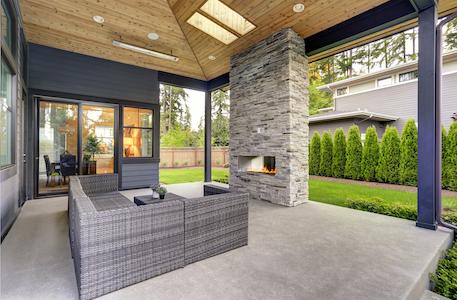
5 Popular Methods to Finish Your Concrete Patio
Patios are an excellent addition to any backyard and rate highly among homeowners’ outdoor remodeling projects. If you’re designing a new patio, one of your most important decisions is how to finish the surface.
All design decisions involve trade-offs. With patios, the most common considerations are appearance, cost, safety (slip resistance), and maintenance. Here are the pros and cons of five popular options.
1. Trowel finish
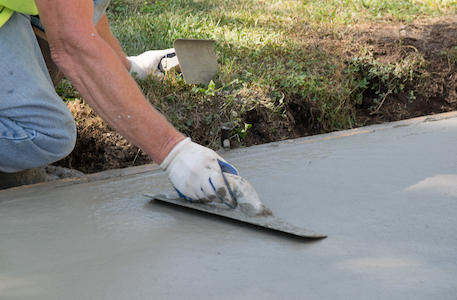
The simplest and most traditional type of patio surface is a smooth trowel finish. After the concrete is poured, flattened into an even layer, and partially hardened, a trowel is passed over the surface.
Trowel finishes are typically a budget-friendly alternative; many prefer their straightforward and uniform appearance. However, it’s important to note that a smooth concrete surface can be slippery, especially when wet.
2. Broomed and brushed concrete
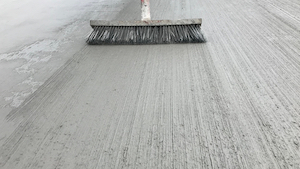
One of the easiest ways to add texture to a concrete patio is to run the bristles of a brush or a flat broom over the surface.
The terms “broomed” and “brushed” are often used interchangeably but tend to refer to whether the finisher is standing on their feet and using a long-handled broom or working on their knees with a short-handled brush.
Broomed and brushed concrete can achieve different results, including soft and subtle textures, parallel rows of grooves, or distinctive patterns, sometimes integrating smooth and brushed surfaces.
3. Stamped concrete
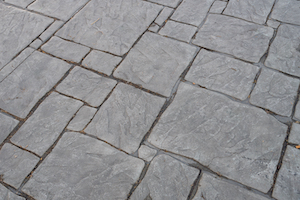
Designed to resemble natural stone, brick, tile, and other patterns, stamped concrete uses rubber mats to imprint designs into drying concrete. Sometimes the concrete is stained to accentuate the stamped design or create a more realistic imitation.
Stamped patterns provide visual interest while creating texture that reduces the chance of slipping. However, remember that any concrete indentations will collect dirt, so it’s a good idea to sweep or blow off your patio periodically—or use a power washer if the surface becomes too dirty.
4. Pebble finish

Pebbles offer another option for adding texture and color to a patio. The stones can be randomly scattered or arranged into patterns. After the rocks are positioned, the installer uses a board to press them down and embed them in the drying concrete.
Pebble finishes are attractive, but you must bump up your budget for additional materials and labor.
5. Rock salt finish
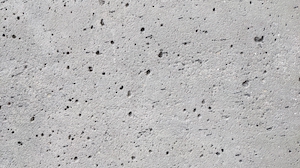
With a salt finish patio, coarse rock salt is pressed into the surface of freshly laid concrete and washed out after the concrete has cured. The result is an irregular pattern of indentations that looks interesting and adds traction to the surface.
Rock salt finishes are cost-effective, but they’re more suited to warmer, drier areas since seasonal freezing, snowing, and thawing conditions could crack and damage the surface.
Other Considerations
Remember that you can add color to your concrete with acid- or water-based stains that come in a wide range of hues. Depending on the finish you select and the manufacturer’s product recommendations, you may want to seal the surface to protect it.
What if you already have a concrete patio? There are numerous ways to give it a new look, including resurfacing the concrete with a fresh layer of one of the five finishes mentioned above. Other options include staining or painting your patio.
